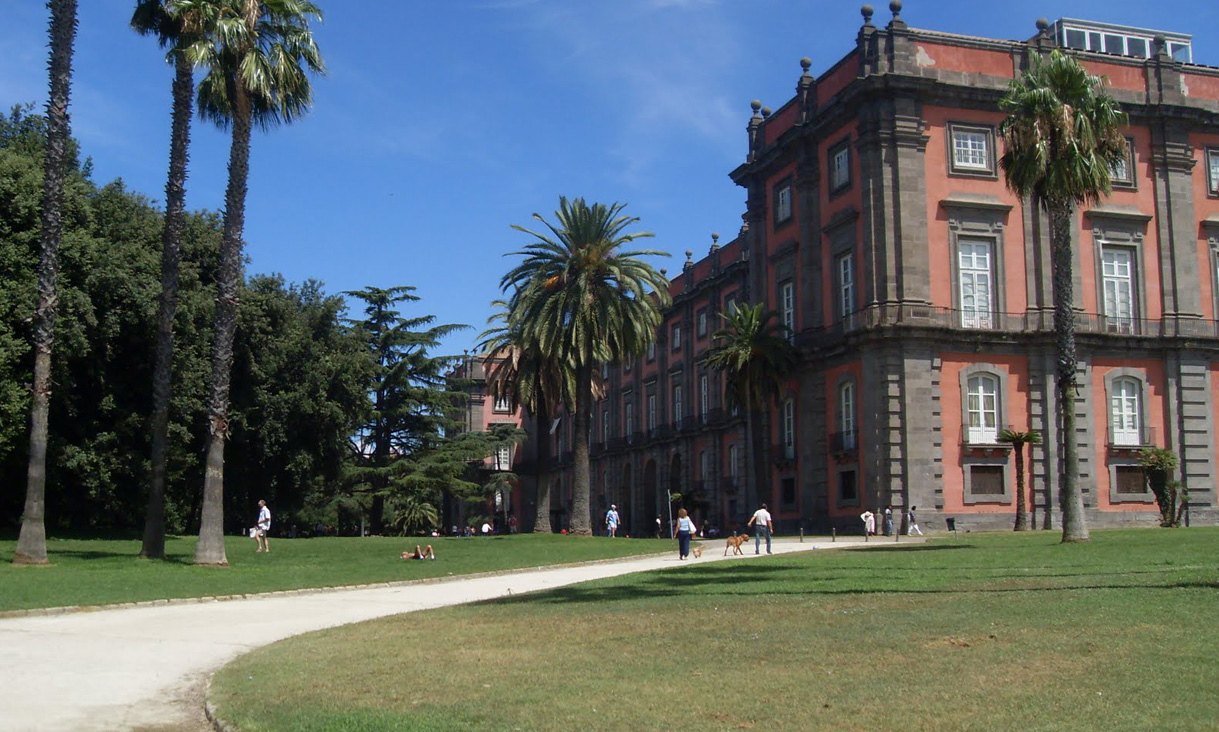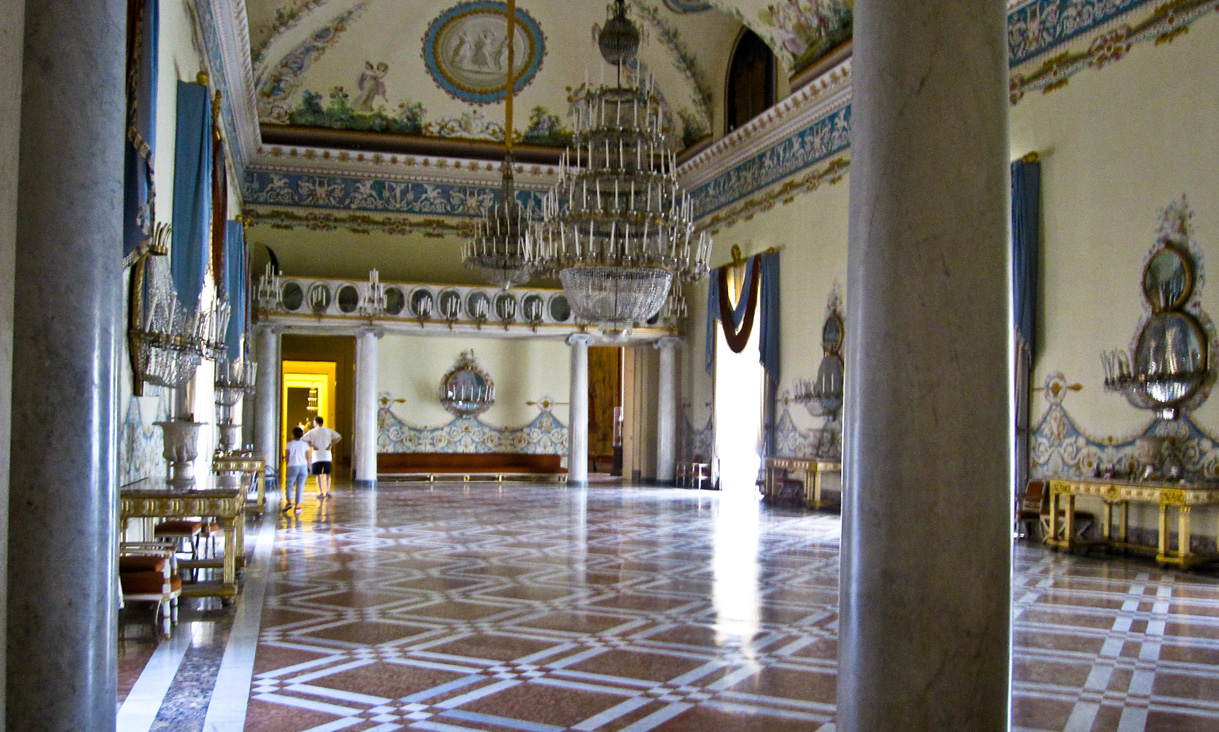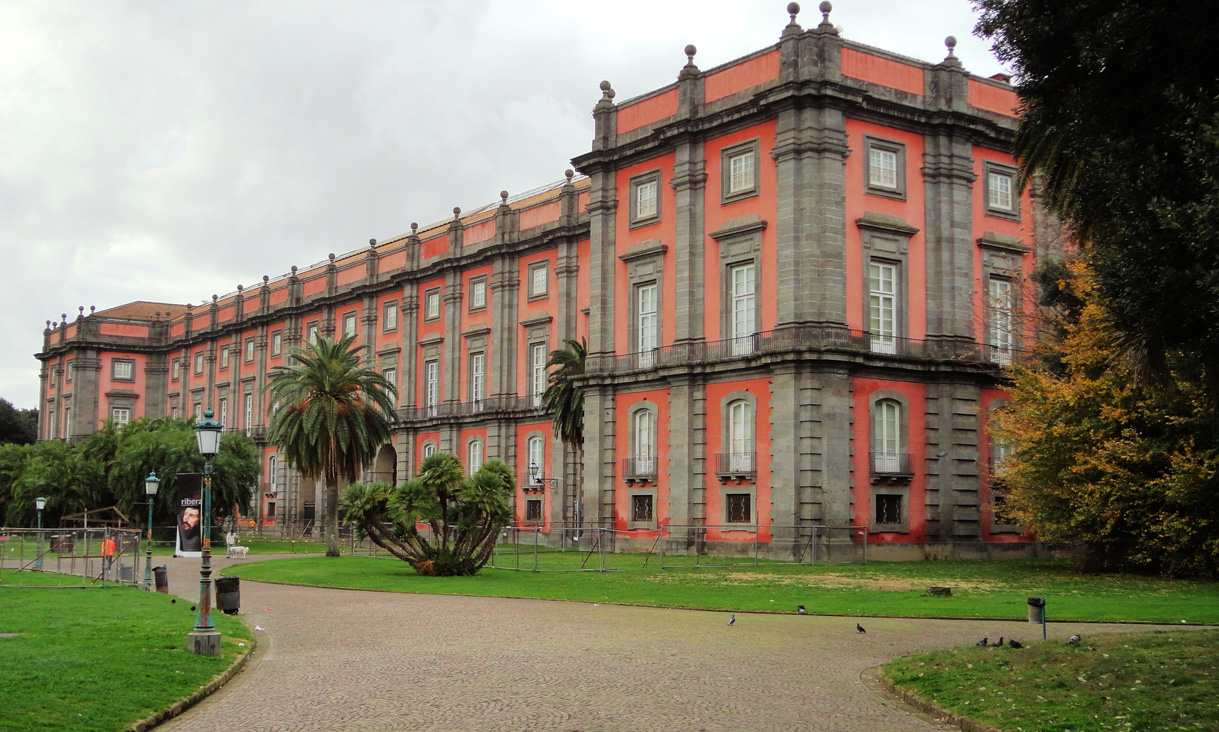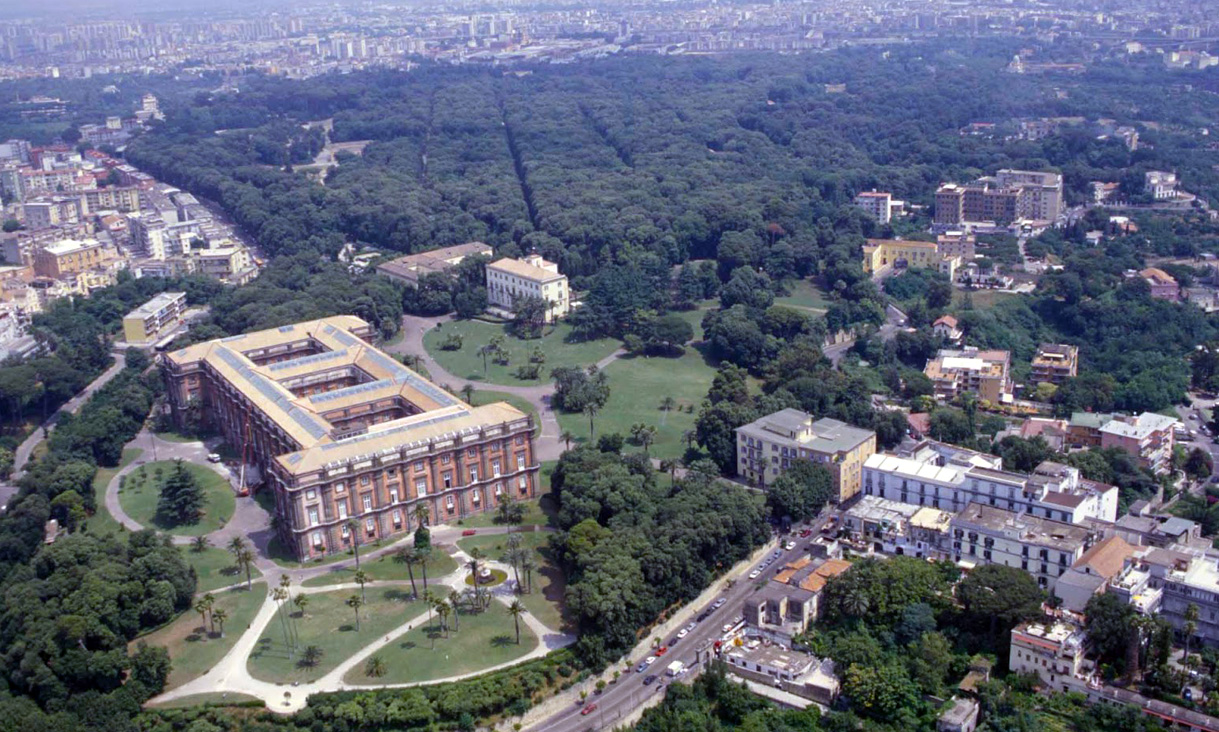The Capodimonte Park (formerly Real forest of Capodimonte) is the largest public park site of the city of Naples.
The forest was built by Charles of Bourbon in 1734. It was initially conceived as a reserve fighter but with King Ferdinand II of the Two Sicilies was transformed into an English garden, giving the appearance that currently maintain.
It covers an area of 134 hectares (1,340,000 m² or 1,340 km²). It looks like a forest interspersed with extensive meadows, valleys crossed by small streams and areas rich in quarries, a typical feature of the Neapolitan hills.
It is accessed via three inputs: Small port, located along Via Miano at the district Glad, door Grande, placed at the beginning of Via Ponti Rossi and finally brings Bellaria, always placed on Via Miano, but further north, at the omonimoponte .
The area adjacent to the Museum of Capodimonte is characterized by open meadows with different plant species. In this area, in addition to the palace, there are several buildings, mostly built in the ‘700: Principles of the casino, so-called Palazzotti, the royal stables.
Beyond the door Middle-old internal access to the hunting reserve of the king on the left of the Princes casino, you enter the forest itself, with five main avenues that have various forks and branches, for a total number of more than 100 driveways and paths. The five avenues begin in a large semicircle in which there are twelve statues eighteenth century. In this part of the park, once used as a hunting ground, there are various buildings, buildings, statues and fountains. The main ones are the building Tower, the Royal Porcelain Factory, the Vaccheria, the casino of the Queen, the building Cataneo, the hermitage of the Capuchins (built in 1819) and the church of San Gennaro Ferdinando Sanfelice.
Also from 1961 is the professional institute industry and crafts for pottery and porcelain “Giovanni Caselli”, who began work in the porcelain factory.
The National Museum of Capodimonte museum in Naples, located inside the palace of the same name: home galleries of ancient art, a contemporary art and a historic apartment.
The National Museum of Capodimonte extends over three levels and the arrangement of the works from the last restoration work that took place from the beginning of the eighties until 1999: the ground floor, but also exploiting areas of the basement, are placed services for visitors and some teaching rooms, the mezzanine is the Cabinet of Drawings and Prints, and exposures nineteenth Private and posters Mele, the first floor is the Galleria Farnese, the Borgia collection, the Royal Apartment, the collection of porcelain, the collection of Ciccio and the Armory Farnese and Bourbon, the second floor is the Neapolitan Gallery, the collection of Avalos, the tapestry room Avalos and the section of contemporary art: the latter continues on the third floor where he also asked the gallery nineteenth and photo gallery




